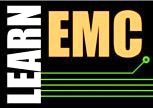Events
Fundamentals of Electromagnetic Compatibility
Description

Nearly all electronic systems are required to meet electromagnetic compatibility (EMC) requirements before they can be sold or offered for sale. For many automotive, aerospace and industrial systems, electromagnetic compatibility is a product safety issue as well as a product compliance issue. Systems with printed circuit boards that are auto-routed or laid out according to a list of “design rules” do not usually meet electromagnetic compatibility requirements. These systems are likely to require multiple trips to the test lab and expensive "fixes" such as ferrites on cables or extensive shielding.
Product engineers with a basic knowledge of important EMC fundamentals can easily avoid many of the most common design mistakes that result in EMC test failures. This 12-hour course is designed to introduce these fundamental concepts to circuit designers, board layout professionals, test engineers or anyone with an interest in ensuring that electronic systems meet their EMC requirements. The course stresses the fundamental concepts and tools that electronics engineers can employ to avoid electromagnetic compatibility and signal integrity problems. Students completing the course will be able to make good decisions regarding board layout and system design for EMC. They will also be well prepared for advanced courses in electromagnetic compatibility that require students to have a basic grasp of important fundamental concepts.
Advanced Design for EMC Compliance
Important: Students taking this course should have completed either the Fundamentals of Electromagnetic Compatibility course, the Electronic Systems Design for EMC Compliance course, the Design for Automotive EMC Compliance course, or the Printed Circuit Board Design for EMC and Signal Integrity course.
Description

Designing for EMC compliance is not a matter of following a set of design rules or sealing everything inside a metal enclosure. It is a systematic process of identifying and evaluating all EMC sources, victims and coupling paths within a system, as well as coupling between the system and its environment. Designing for compliance helps to ensure that products meet their cost and development schedule targets.
This 12-hour course leads students through the process of systematically ensuring that their product designs will meet all applicable EMC requirements. Students will learn to identify and utilize the ground structure, control the flow of high- and low-frequency currents, identify and characterize potential sources and victims of EMI, control bandwidths, ignore structures and coupling paths that do not contribute to EMC problems, and systematically identify and evaluate structures and coupling paths capable of causing a product to be non-compliant.
